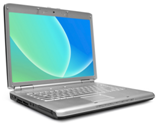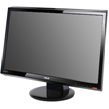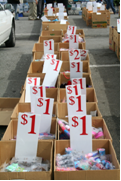Cultivating a new business? Consider planting seeds of green
By Adam
June 17, 2010
Uncategorized
Share Facebook Tweet on Twitter Share with Email Share with LinkedIn Share with Pinterest
By Donna Marrin
 You’re launching a new business and you want to outfit your home office with budget-friendly tools and supplies that provide quality and reliability. Before you grab a shopping cart, you might want to consider why switching to environmentally friendly products may be an eco-smart and eco-nomical choice.
You’re launching a new business and you want to outfit your home office with budget-friendly tools and supplies that provide quality and reliability. Before you grab a shopping cart, you might want to consider why switching to environmentally friendly products may be an eco-smart and eco-nomical choice.
Chris Winter, executive director of the Conservation Council of Ontario reports that the top three home office problems are energy waste, paper consumption and hazardous waste (batteries, ink and toner cartridges) disposal. So what choices do you have if you want to be kind to the environment while still watching your operating costs?
Energy savers
1. May the power bar be with you.
Winter says it’s a myth that you shouldn’t turn off your computer at the end of the day. “Yes, it peaks on startup, but the base operating load of the computer for the next 24 hours far exceeds the startup.” To boot (excuse the pun), items still connected to your computer will continue to drain energy, even when not in use: speakers, printers, scanners, PDAs, etc. Is the power bar your friend? You bet. When all your equipment runs through a power bar, one flick of the switch saves useless energy burn. (Find a powerbar at STAPLES)
 When you’re shopping for lighting, choose bulbs and fixtures with an Energy Star rating. They use up to two-thirds less energy than the regulars. And—not to sound like the boss of you or anything—don’t forget to turn the lights off when you leave a room.
When you’re shopping for lighting, choose bulbs and fixtures with an Energy Star rating. They use up to two-thirds less energy than the regulars. And—not to sound like the boss of you or anything—don’t forget to turn the lights off when you leave a room.
2. Laptop computers trump desktop computers.
 Not only do laptop computers provide you with use-anywhere mobility, they also consume one-eighth the power of a desktop computer. According to Winter, multiple laptop users under one roof performing a variety of tasks will still not use as much power as one desktop computer!
Not only do laptop computers provide you with use-anywhere mobility, they also consume one-eighth the power of a desktop computer. According to Winter, multiple laptop users under one roof performing a variety of tasks will still not use as much power as one desktop computer!
3. Flatscreen monitors rock.
 Flatscreen or LCD (Liquid Crystal Display) monitors use less than half the energy of traditional CRT (Cathode Ray Tube) monitors, plus they’re lighter and easier to adjust. With sharper quality and no flickering, text is easier to read and there’s less strain on your eyes.
Flatscreen or LCD (Liquid Crystal Display) monitors use less than half the energy of traditional CRT (Cathode Ray Tube) monitors, plus they’re lighter and easier to adjust. With sharper quality and no flickering, text is easier to read and there’s less strain on your eyes.
Recycle!
4. Grandma—who reused EVERYTHING—was actually ahead of her time.
 Many everyday items that we toss away without thought can be reused. The back of used paper—daily desk calendars, sticky notes, etc.—makes great notepaper for jotting ideas or diagrams. Use the two-sided setting on your printer and copier to reduce paper consumption, and again, instead of throwing away already-printed-on-one-side paper, use the backside as notepaper. When you do purchase paper, choose brands made from recycled materials and approved by the Forest Stewardship Council of Canada. Save elastic bands from newspaper deliveries. Buy rechargeable batteries and refillable ink and toner cartridges. Did you know that it takes up to 1,000 years for one cartridge to decompose in a landfill? Instead of trashing them, drop your electronic waste, finished rechargeable batteries and old ink and toner cartridges at a STAPLES store for recycling.
Many everyday items that we toss away without thought can be reused. The back of used paper—daily desk calendars, sticky notes, etc.—makes great notepaper for jotting ideas or diagrams. Use the two-sided setting on your printer and copier to reduce paper consumption, and again, instead of throwing away already-printed-on-one-side paper, use the backside as notepaper. When you do purchase paper, choose brands made from recycled materials and approved by the Forest Stewardship Council of Canada. Save elastic bands from newspaper deliveries. Buy rechargeable batteries and refillable ink and toner cartridges. Did you know that it takes up to 1,000 years for one cartridge to decompose in a landfill? Instead of trashing them, drop your electronic waste, finished rechargeable batteries and old ink and toner cartridges at a STAPLES store for recycling.
6. Start commuting more often on the information highway
 Online banking is secure, saves you time and reduces paper trails. Have payments deposited directly into your account instead of accepting cheques. Sign up for monthly online statements. At the same time, sign up for online billing. Many companies now offer this service, as well as allow you to make automatic payments through monthly bank account debits. Not only will you save trees by cutting back on the paper trails, you’ll also save money on envelopes and postage. And—bonus!—electronic files take up much less space than file folders and shoeboxes!
Online banking is secure, saves you time and reduces paper trails. Have payments deposited directly into your account instead of accepting cheques. Sign up for monthly online statements. At the same time, sign up for online billing. Many companies now offer this service, as well as allow you to make automatic payments through monthly bank account debits. Not only will you save trees by cutting back on the paper trails, you’ll also save money on envelopes and postage. And—bonus!—electronic files take up much less space than file folders and shoeboxes!
7. Thrift shopping saves more than money
 Buying used is very fashionable these days. Scour flea markets and yard sales for used office furniture and other items in good condition. It really is true: “one person’s junk is another person’s treasure”… And the extra treasure in my wallet is nice too!
Buying used is very fashionable these days. Scour flea markets and yard sales for used office furniture and other items in good condition. It really is true: “one person’s junk is another person’s treasure”… And the extra treasure in my wallet is nice too!
8. Give non-toxic cleaning products a whirl
 Why choose non-toxic cleaning products when you can get cheaper stuff at a dollar store? Because while you’re sanitizing your office and home, you and everyone else under your roof are inhaling a cocktail of chemicals such as chlorine bleach, ammonia, petrochemicals and volatile organic compounds (VOCs). The result? Indoor air pollution as well as environmental pollution through drainage. Non-toxic products might cost a little bit more, but clean breathing air and groundwater is priceless. (Check out STAPLES’ line of eco easy products)
Why choose non-toxic cleaning products when you can get cheaper stuff at a dollar store? Because while you’re sanitizing your office and home, you and everyone else under your roof are inhaling a cocktail of chemicals such as chlorine bleach, ammonia, petrochemicals and volatile organic compounds (VOCs). The result? Indoor air pollution as well as environmental pollution through drainage. Non-toxic products might cost a little bit more, but clean breathing air and groundwater is priceless. (Check out STAPLES’ line of eco easy products)
Donna Marrin is a freelance Senior Writer/Editor specializing in corporate communications and advertising. She also founded and runs the Markham Village Writers. You can visit their website at www.markhamvillagewriters.com
 You’re launching a new business and you want to outfit your home office with budget-friendly tools and supplies that provide quality and reliability. Before you grab a shopping cart, you might want to consider why switching to environmentally friendly products may be an eco-smart and eco-nomical choice.
You’re launching a new business and you want to outfit your home office with budget-friendly tools and supplies that provide quality and reliability. Before you grab a shopping cart, you might want to consider why switching to environmentally friendly products may be an eco-smart and eco-nomical choice.
Chris Winter, executive director of the Conservation Council of Ontario reports that the top three home office problems are energy waste, paper consumption and hazardous waste (batteries, ink and toner cartridges) disposal. So what choices do you have if you want to be kind to the environment while still watching your operating costs?
Energy savers
1. May the power bar be with you.
Winter says it’s a myth that you shouldn’t turn off your computer at the end of the day. “Yes, it peaks on startup, but the base operating load of the computer for the next 24 hours far exceeds the startup.” To boot (excuse the pun), items still connected to your computer will continue to drain energy, even when not in use: speakers, printers, scanners, PDAs, etc. Is the power bar your friend? You bet. When all your equipment runs through a power bar, one flick of the switch saves useless energy burn. (Find a powerbar at STAPLES)
2. Laptop computers trump desktop computers.
 Not only do laptop computers provide you with use-anywhere mobility, they also consume one-eighth the power of a desktop computer. According to Winter, multiple laptop users under one roof performing a variety of tasks will still not use as much power as one desktop computer!
Not only do laptop computers provide you with use-anywhere mobility, they also consume one-eighth the power of a desktop computer. According to Winter, multiple laptop users under one roof performing a variety of tasks will still not use as much power as one desktop computer!
3. Flatscreen monitors rock.
 Flatscreen or LCD (Liquid Crystal Display) monitors use less than half the energy of traditional CRT (Cathode Ray Tube) monitors, plus they’re lighter and easier to adjust. With sharper quality and no flickering, text is easier to read and there’s less strain on your eyes.
Flatscreen or LCD (Liquid Crystal Display) monitors use less than half the energy of traditional CRT (Cathode Ray Tube) monitors, plus they’re lighter and easier to adjust. With sharper quality and no flickering, text is easier to read and there’s less strain on your eyes.
Recycle!
4. Grandma—who reused EVERYTHING—was actually ahead of her time.
 Many everyday items that we toss away without thought can be reused. The back of used paper—daily desk calendars, sticky notes, etc.—makes great notepaper for jotting ideas or diagrams. Use the two-sided setting on your printer and copier to reduce paper consumption, and again, instead of throwing away already-printed-on-one-side paper, use the backside as notepaper. When you do purchase paper, choose brands made from recycled materials and approved by the Forest Stewardship Council of Canada. Save elastic bands from newspaper deliveries. Buy rechargeable batteries and refillable ink and toner cartridges. Did you know that it takes up to 1,000 years for one cartridge to decompose in a landfill? Instead of trashing them, drop your electronic waste, finished rechargeable batteries and old ink and toner cartridges at a STAPLES store for recycling.
Many everyday items that we toss away without thought can be reused. The back of used paper—daily desk calendars, sticky notes, etc.—makes great notepaper for jotting ideas or diagrams. Use the two-sided setting on your printer and copier to reduce paper consumption, and again, instead of throwing away already-printed-on-one-side paper, use the backside as notepaper. When you do purchase paper, choose brands made from recycled materials and approved by the Forest Stewardship Council of Canada. Save elastic bands from newspaper deliveries. Buy rechargeable batteries and refillable ink and toner cartridges. Did you know that it takes up to 1,000 years for one cartridge to decompose in a landfill? Instead of trashing them, drop your electronic waste, finished rechargeable batteries and old ink and toner cartridges at a STAPLES store for recycling.
6. Start commuting more often on the information highway
 Online banking is secure, saves you time and reduces paper trails. Have payments deposited directly into your account instead of accepting cheques. Sign up for monthly online statements. At the same time, sign up for online billing. Many companies now offer this service, as well as allow you to make automatic payments through monthly bank account debits. Not only will you save trees by cutting back on the paper trails, you’ll also save money on envelopes and postage. And—bonus!—electronic files take up much less space than file folders and shoeboxes!
Online banking is secure, saves you time and reduces paper trails. Have payments deposited directly into your account instead of accepting cheques. Sign up for monthly online statements. At the same time, sign up for online billing. Many companies now offer this service, as well as allow you to make automatic payments through monthly bank account debits. Not only will you save trees by cutting back on the paper trails, you’ll also save money on envelopes and postage. And—bonus!—electronic files take up much less space than file folders and shoeboxes!
7. Thrift shopping saves more than money
 Buying used is very fashionable these days. Scour flea markets and yard sales for used office furniture and other items in good condition. It really is true: “one person’s junk is another person’s treasure”… And the extra treasure in my wallet is nice too!
Buying used is very fashionable these days. Scour flea markets and yard sales for used office furniture and other items in good condition. It really is true: “one person’s junk is another person’s treasure”… And the extra treasure in my wallet is nice too!
8. Give non-toxic cleaning products a whirl
 Why choose non-toxic cleaning products when you can get cheaper stuff at a dollar store? Because while you’re sanitizing your office and home, you and everyone else under your roof are inhaling a cocktail of chemicals such as chlorine bleach, ammonia, petrochemicals and volatile organic compounds (VOCs). The result? Indoor air pollution as well as environmental pollution through drainage. Non-toxic products might cost a little bit more, but clean breathing air and groundwater is priceless. (Check out STAPLES’ line of eco easy products)
Why choose non-toxic cleaning products when you can get cheaper stuff at a dollar store? Because while you’re sanitizing your office and home, you and everyone else under your roof are inhaling a cocktail of chemicals such as chlorine bleach, ammonia, petrochemicals and volatile organic compounds (VOCs). The result? Indoor air pollution as well as environmental pollution through drainage. Non-toxic products might cost a little bit more, but clean breathing air and groundwater is priceless. (Check out STAPLES’ line of eco easy products)
Donna Marrin is a freelance Senior Writer/Editor specializing in corporate communications and advertising. She also founded and runs the Markham Village Writers. You can visit their website at www.markhamvillagewriters.com